 Wines from the Czech Republic are a secret no more. Wines from the Czech Republic are a secret no more. Do you know that a wine from the Czech Republic was selected the “Best White Wine” at the prestigious 2014 San Francisco International Wine Competition? NOTE: All wines tasted at this event were provided by the sponsoring wineries. Please see my page ' Submissions, Reviews, Invitations & Disclaimers'. It seems the ‘cat is out of the bag’ when it comes to the quality and character of these delicious wines from eastern Europe, thanks to the Petr Vacenovsky 2013 Riesling winning double gold and best of show at the competition. Now, it used to be when I thought of this historic nation, I would think of handcrafted crystal, intricate garnet jewelry, a treasure-trove of culture and architecture, and of course, Pilsner, but after having an opportunity to try a selection of Czech wines, I can now add vino to the list. Viticulture and wine are nothing new to this region of the world. Like many parts of Europe, the Romans brought the vine to the area and are credited with introducing Grüner Veltliner and Welschriesling which are still grown today. During the Middle Ages the industry really took hold mostly due to the power of the monasteries. Importing grapes from France and Germany, they began to establish vineyard designations and winemaking rules as far back as 1309. Although the territory was conquered and occupied over the centuries, vineyards here supplied wines for the aristocracy of Europe until phylloxera destroyed much of the vines at the turn of the 19th to 20th century. Today, the Czech Republic has a small but thriving wine industry. The majority of the vineyards (96%) are located in the southern region of Moravia ( Mo-rahv-EE-ah) which is just north of the well known Austrian wine region, Weinviertel. A small number of vineyards may be found in the northern region of Bohemia which is on the same latitude as the Rheingau area of neighboring Germany. The nation itself is landlocked and the terrain is predominately rolling hills, with the White Carpathian mountains sheltering the wine regions of the south. Soil types range from rich dark clay to gravel, marl and limestone. There are are about 18,000 winemakers in the country - many of them extremely small with production of only a few barrels - continuing the age old traditions of local winemaking. They make wines for their own palates - bone dry and full of crispy minerality with hints of spiciness. It’s not uncommon to see a group of local winemakers getting together on a Saturday afternoon to sip and critique each others product! The majority of production is white wine - around 60% - with red and rosé making up the balance. With larger producers looking to export more of their product, they are now producing wines from dry to off dry as well as the popular sweet, dessert ’straw wines’ . (For more on this wine style, click here) Many of the grapes grown here are familiar names:, Chardonnay, Pinot Blanc, Pinot Gris, Pinot Noir and Cabernet Sauvignon. Just as fabulous, but perhaps not household names (yet!) are: Müller-Thurgau, Blaufränkisch (Frankovka), St. Laurent (Svatovavnnecké) and Welschriesling (Ryzlink Vlassky). A system of quality designation, based on the French AOC and Austrian DAC, regulates things such as where the grapes are grown, hand harvesting, oak barrel usage, alcohol levels and many other factors. This ensures that the wines labeled with a regional VOC (Vina Originální Certifikace) mark have a guaranteed level of quality and reflect the best attributes of Czech wines.
There’s a distinctive feature that can’t go un-noticed - the absolutely captivating labels on the Vino z Czech vintages. Every one bears artwork by the famous Art Nouveau artist Alphonse Mucha. These sensuous depictions of female beauty are not only eye-catching, but also reflect the artistic integrity of the wines themselves. (For more on the Art Nouveau movement in the Czech Republic, see below)  Spicy Grüner Veltliner Spicy Grüner Veltliner Our first wine was the Grüner Veltliner Michlovsky 2011 ($16) - Fragrant dried apricot, sweet grass and white pepper with ripe red apple and lemon balm on the palate - showing a slight hint of effervescense. Clean and minerally, it paired well with a spicy crab salad and the bacon and onion tart.  Wine & Food - perfect! Wine & Food - perfect! Next, Welschriesling Spielberg 2013 ($23). This variety is not related to the famous Riesling grape, even though the names are similar. All white flower blossoms, sweet grass and honey with touches of pepper and lemon peel. Great paired with that onion tart, and gobs of brie.  Czech Pinot Blanc Czech Pinot Blanc Two examples of Pinot Blanc followed. Here’s a hint - if you enjoy Pinot Gris/Grigio, give their ‘relative’ Pinot Blanc a try! Pinot Blanc Vyskocil 2009 ($23) showed unexpected tropical character - kumquat, perfumey guava, ripe peaches, light honeysuckle and spicy clove/nutmeg. Paired beautifully with brie, Comte cheeses and sushi - especially the cucumber roll.  Alphonse Mucha labels Alphonse Mucha labels Pinot Blanc Spielberg 2009 ($34) was quite different - lots of ripe apple and stone fruits with an abundance of dusty rose aromas. Off dry, the finish was long, clean and supple with more baked apple and honey notes. Once again, it was terrific with the sushi and the onion tart, too.  Refreshing Riesling Refreshing Riesling Now, on to Riesling Michlovsky 2011 ($19) Classic Riesling with crunchy green apples, linden flowers and a passing whiff of petrol! Plump apricots on the palate with a slight, refreshing touch of ‘fizz’. Perfect with the sushi, Persian dolmas with rice, veg and dill and, believe it or not, a walnut baklava!  Rivaner aka Müller-Thurgau Rivaner aka Müller-Thurgau Rivaner Valtice 2011 ($16) Rivaner is the local name for Müller-Thurgau and, if you enjoy off-dry wines from the Rhine, this will be your new favorite! Soft, supple apple and ripe, ripe pear flavors make this an easy sipping wine. I loved it with the crab salad and the sushi and the hot, spicy Sriracha chicken wings found a refreshing friend in this wine.  Great with food or on its own. Great with food or on its own. Rouci Stapelton and Springr 2007 ($40) A blend of Pinot Noir and St. Laurent (the most widely planted red grape in the Czech Republic - also popular in Austria). Earthy and velvety, red plum with caramel, black pepper and milk chocolate undertones, the palate is full with dried strawberry, black raspberry and ripe rich cherry. If you like a fruity, lighter red wine like Beaujolais, this is right up your alley. I loved it with a spicy ginger snap cookie, the spicy wings and Comte cheese. Super sipper, too.  Blauer Portugieser Blauer Portugieser Our final wine was a ‘mystery’ treat, selected by the Sommelier back in the Czech Republic. Modry Portugal 2012 from Vinarstvi Vyskocil is made with the grape variety Blauer Portugieser. The deep garnet color is reflected in the nose and on the palate - lots of super juicy, purple fruits and soft baking spices, red licorice and black plum - reminiscent of a Christmas Pudding in a glass.  Hair of the dog! Hair of the dog! To finish the event in true Czech tradition, we each had a ‘wee dram’ of a local digesif called Becherovka. And a tiny sip is all that’s needed. Although the locals tout this as a ‘cure all’ and a great pick me up for the ‘morning after’, I think I’ll stick with my new-found friends - the delicious and intriguing wines of the Czech Republic. NOTE: All wines tasted at this event were provided by the sponsoring wineries. Please see my page ' Submissions, Reviews, Invitations & Disclaimers'. What is Art Nouveau?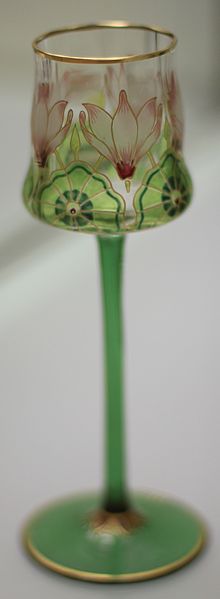 By Øyvind Holmstad (Own work) wikimedia.org By Øyvind Holmstad (Own work) wikimedia.org The distinctive designs of world renowned Czech artist Alphonse Mucha are a true representation of the Art Nouveau style. This undulating, sensuous artistic movement began in Europe in the late 1800’s and continued into the early years of the 20th century. Using nature’s graceful, flowing lines as it’s inspiration, the style infiltrated all the arts. From architecture to fashion, from everyday household items to the painting, sculpture and art glass, “The New Art” took the world by storm. Mucha was, and continues to be, one of the most recognizable proponents of the period and his homeland of the Czech Republic has respected and preserved many architectural representations. For more information: www.czechtourism/a/art-nouveau/
0 Comments
NOTE: All wines tasted at this event were provided by the sponsoring wineries. Please see my page ' Submissions, Reviews, Invitations & Disclaimers'. Many of us are ‘seasonal’ wine drinkers; in other words, we tend to drink cozy reds in the winter and lighter, more refreshing wines in the warmer months. Not only do these choices fit our mood but also the food selections we make. With this in mind, the Wine Review Council met on a classic Southern California July evening to sample a selection of wines perfectly paired to our relaxing poolside setting. All the samples hailed from California, from producers large and small, both established and new and the evening brought a few surprises. Both the first and last wines were versions of Viognier from one of the newer wineries in Southern California, Estate d’Iacobelli (pronounced “de Yack-oh-belly). This small establishment opened the doors of their tasting room this past May, located in the town of Fallbrook, located between San Diego and Temecula. The owners, Ronei and Lisa Iacobelli, are originally from Michigan, but their love of wine and Italian heritage brought them to the Temecula Valley in 1998 where they bought 20 acres and planted vines and olive trees. They decided, however, to build their tasting room on a beautiful hillside overlooking the Pala Mesa Golf course. The 2011 Estate d’Iacobelli Viognier is refreshingly fragrant with crunchy green pear, orange blossom and peach leading to a somewhat creamy palate with nectarine and lime zest on the finish. Not your typical Viognier, but delicious just the same. Retail $32.00. The companion wine, 2010 Estate d’Iacobelli “Sticky Fingers” LH Viognier was a terrific finish to the evening. Baked pear and nutty cashew mingled with lemon drop! The finish was not syrupy or overly sweet. It would make a perfect ‘little something’ after dinner. Retail $26.00. Both wines are available at the tasting room or through their website. Moving further north to Mendocino, we sampled three offerings from Moniker Wine Estates. A creation of three generations of the Thornhill family, the name and logo honor the multiple generations working together to create this premium line of wines. First up was the 2012 Moniker Chardonnay. The majority of the fruit was sourced from the Ribera vineyard located on the banks of the Russian River. The wine was barrel fermented for four months in American oak and, prior to bottling, blended with a bit of Viognier and more Chardonnay that was aged in French Oak. The result is a subdued and somewhat elegant Chardonnay, with soft apple, spicy cinnamon and notes of baked pear. The sur lie aging lends a soft mouth feel and good acidity keeps the finish fresh. Retail $23.00 Pinot Noir is always a great choice for summertime cuisine and the first one we sampled was also from Moniker. The 2012 Monkier Pinot Noir is a blend of grapes harvested from three Mendocino vineyards located in Anderson, Redwood and Potter Valleys, aged in American oak for seven months. The wine is all red fruits – rhubarb, cherry and red plum, highlighted with notes of fresh tobacco and tealeaf. Retail $30.00 Our last selection from this producer was the 2011 Moniker Cabernet Sauvignon. Although I wouldn’t normally consider this variety as a ‘summer sipper’, one can never say no to a California Cab! This bottling received Double Gold at the 2014 San Francisco Chronicle Awards. Aged for fourteen months in three year old French oak barrels, the wine lets the fruit do the talking. Black cherry, spicy plum and vanilla notes on the nose and palate linger on to the finish. This wine would definitely benefit from some more time in the bottle to fully show itself. Retail $30.00 From newer wineries on to a familiar name in the pages of California wine history: Wente Vineyards. Founded in 1883, Wente is the oldest continuously family owned winery in the United Sates. They began with 47 acres, planted by founder C.H. Wente and have now grown to 3000 acres, still in the Livermore Valley AVA. The Wente family have always contributed to the growth of the wine industry: first to put the grape variety name on the label, founders of the California Wine Institute and of course, the development of the now prolific Wente Clone of Chardonnay. They were honored as the American Winery of the Year in 2011 by Wine Enthusiast Magazine and in 2010 became a Certified Sustainable Vineyard, part of their “Family for the Future” campaign. To be honest, I had not tasted any of their wines for a very long time. Call me a snob, but I just hadn’t. I was in for a pleasant revelation. We first sampled the 2012 Wente Riva Ranch Chardonnay. This is part of the “Heritage Block” Series utilizing grapes from vineyards named after some of the pioneers of Wente winemaking. They are located in the Arroyo Seco region –considered one of the prime Chardonnay areas since the 1960s. The grapes were fermented in a combination of French, American and Eastern European barrels and stainless steel. The result is a tasty, New World Chardonnay. Vanilla beans, soft toast, baked apples with nutmeg and hints of tropical pineapple. Retail $22.00 The second sample from this historic producer was the 2012 Wente Morning Fog Chardonnay. Named after the cooling mist that flows from San Francisco Bay over the vineyards of the Livermore Valley, the wine is aged half in stainless steel and half in new French, American and European oak barrels. All the wine is aged sur lie for seven months. Elegant and enticing soft apple, lemon curd and spicy ginger show on the nose and palate with soft toasty, brioche, peach and applesauce lingering on the finish. Part of the ‘Vineyard Selection’ Series. Retail: $12.00 Our third and last taste of Wente was red - the 2012 Wente Reliz Creek Pinot Noir. The fruit once again is sourced from the vineyards of Arroyo Seco in Monterey. The soil here is gravelly loam with shale and limestone, lending structure and minerality to the wine. The wine spends twenty months in a blend of French and European neutral oak. The lovely cherry red hue matches the perfumy nose filled with cherry, black raspberry, and toast. The palate is deeper with notes of raspberry preserve, dark strawberry and earthy note of kirsch. The finish is clean with touches of white pepper. All in all, a feminine, Old World influenced Pinot. “Heritage Block Series” Retail: $28.00 At the end of each Wine Review Council tasting, we all rank the wines according to our personal preferences. For once, the votes were all swayed in one direction: the Wente Way! First place went to the Wente Reliz Creek Pinot Noir, with the Morning Fog and Riva Ranch Chardonnay’s sliding into second and third. Varietal character, value for money and food compatibility lead to most of our conclusions, So, until next time, happy sipping, whatever the season. NOTE: All wines tasted at this event were provided by the sponsoring wineries. Please see my page ' Submissions, Reviews, Invitations & Disclaimers'.
|
AuthorWine lover, educator and writer. Archives
March 2017
Categories
All
|
"In water one sees one's own face; But in wine, one beholds the heart of another." An Old French proverb


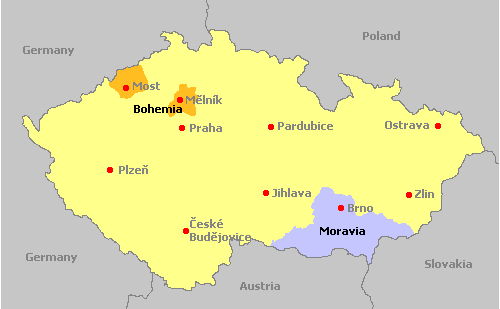

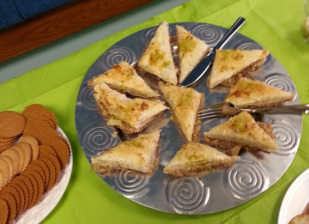

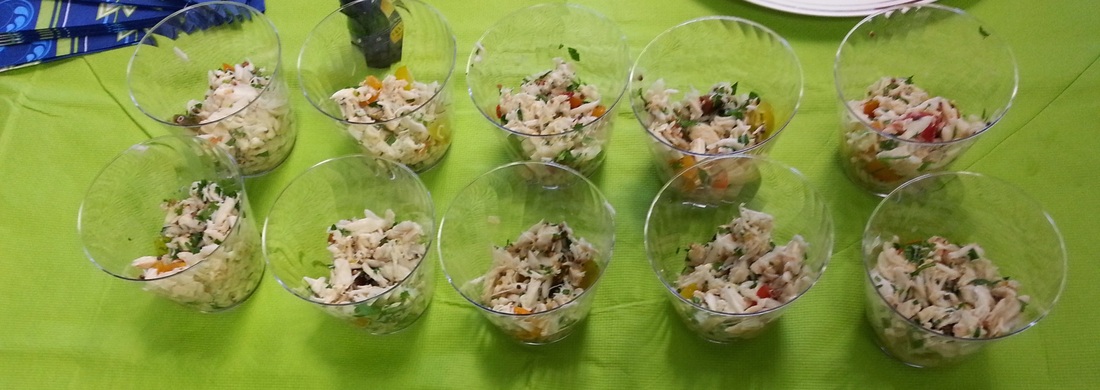




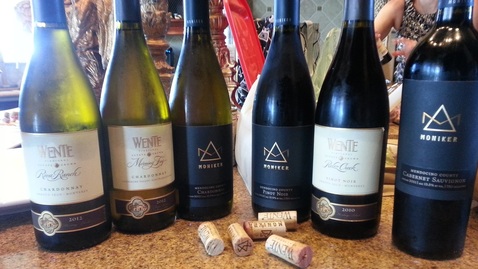


 RSS Feed
RSS Feed
